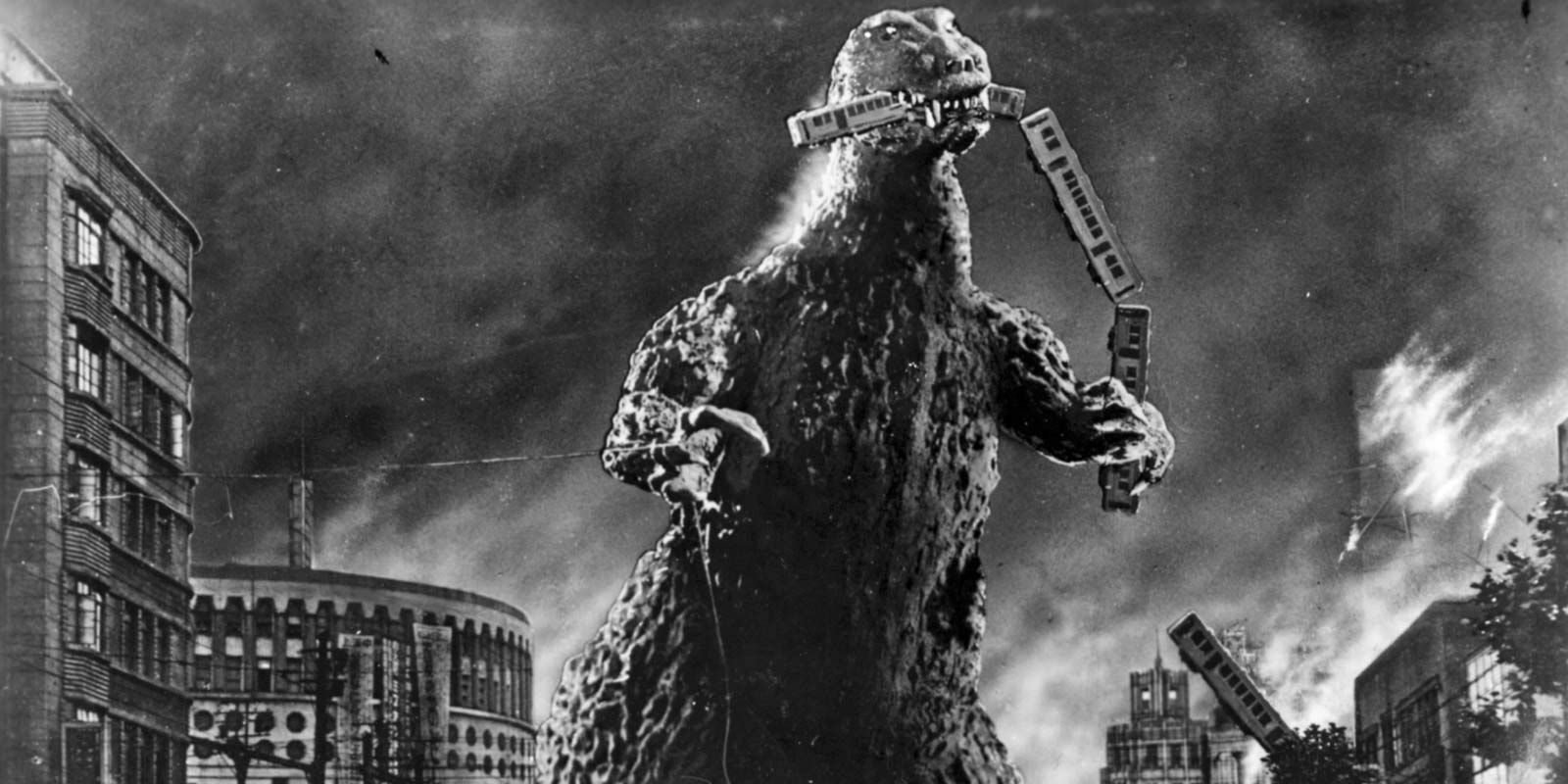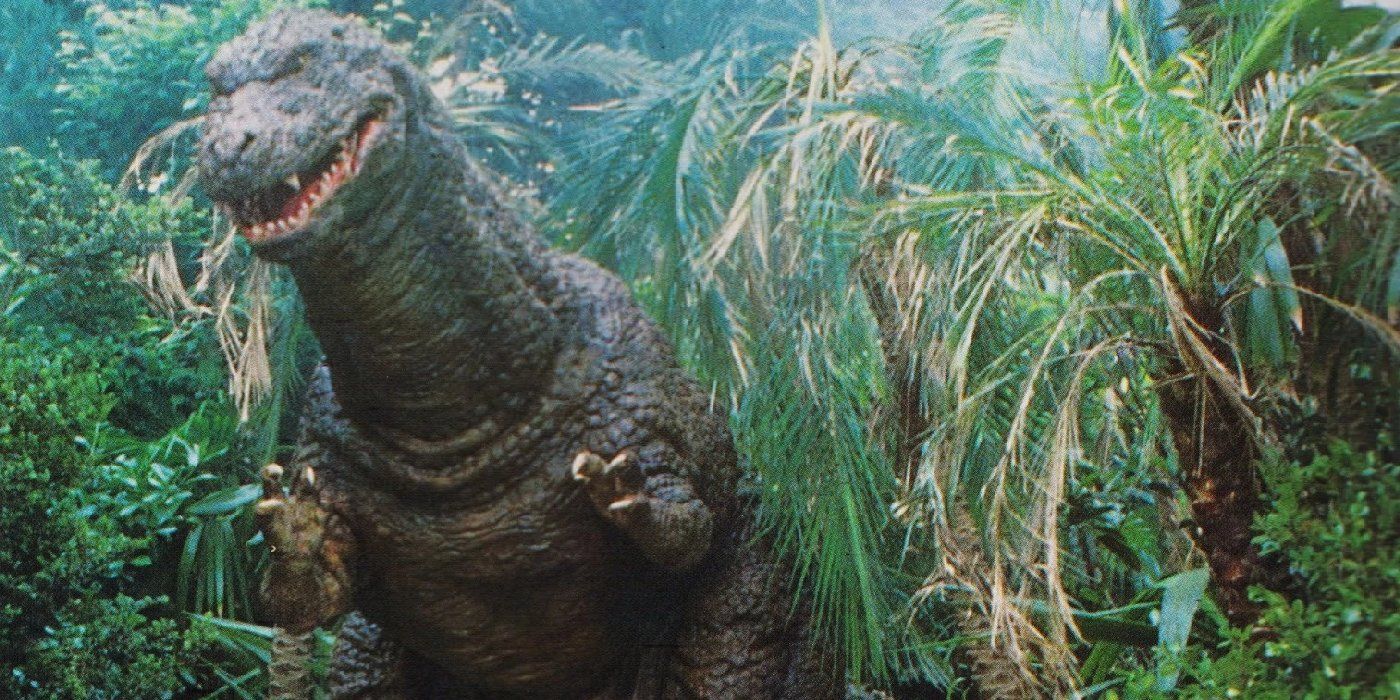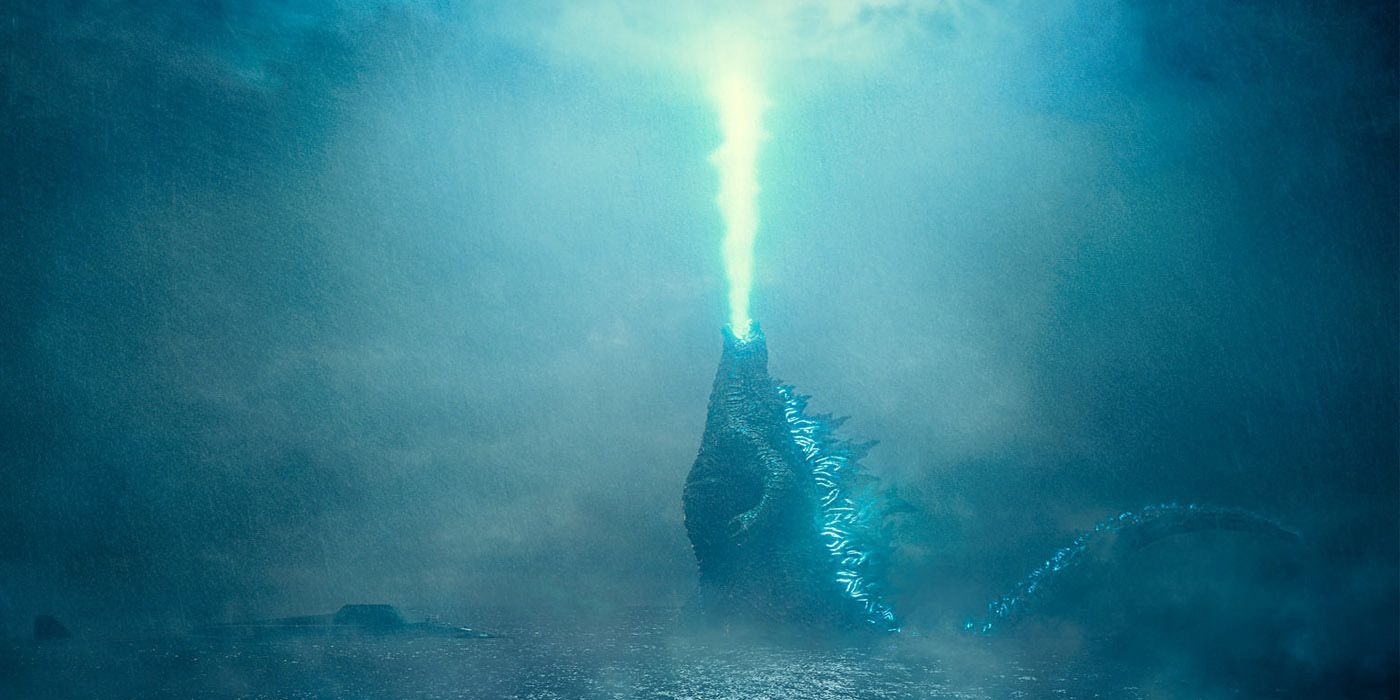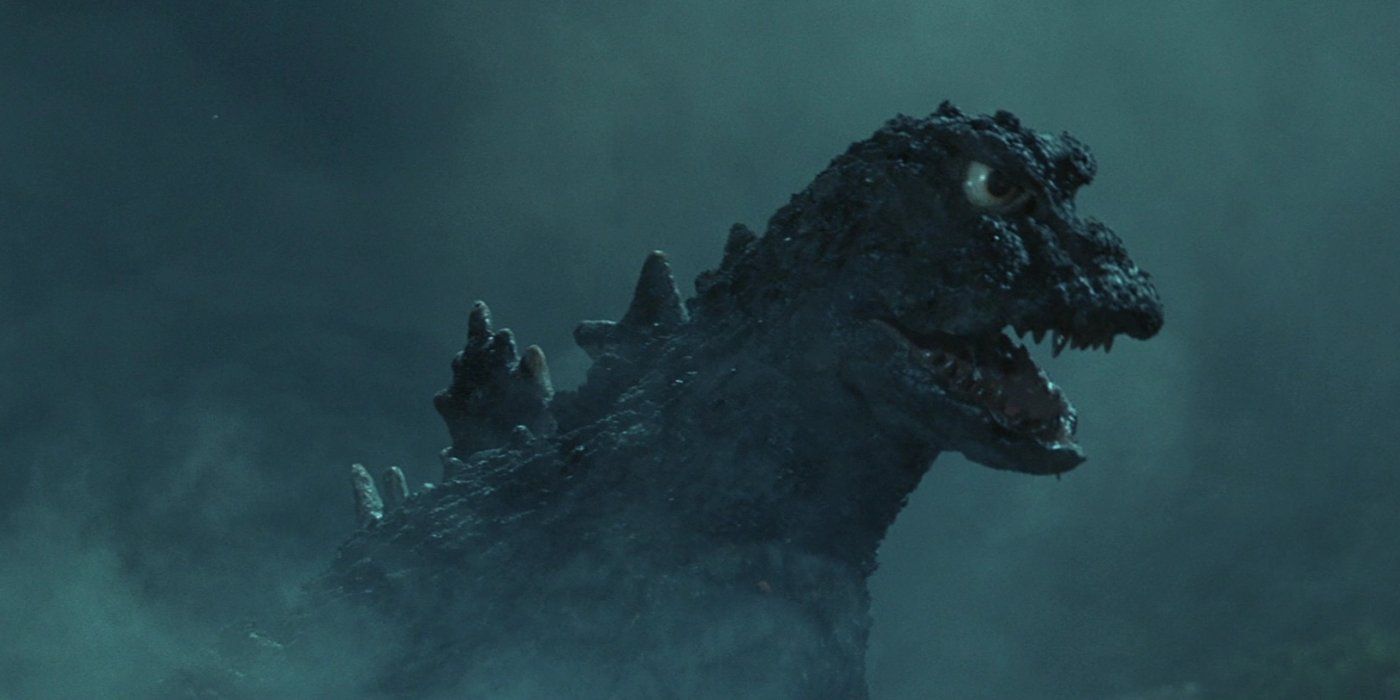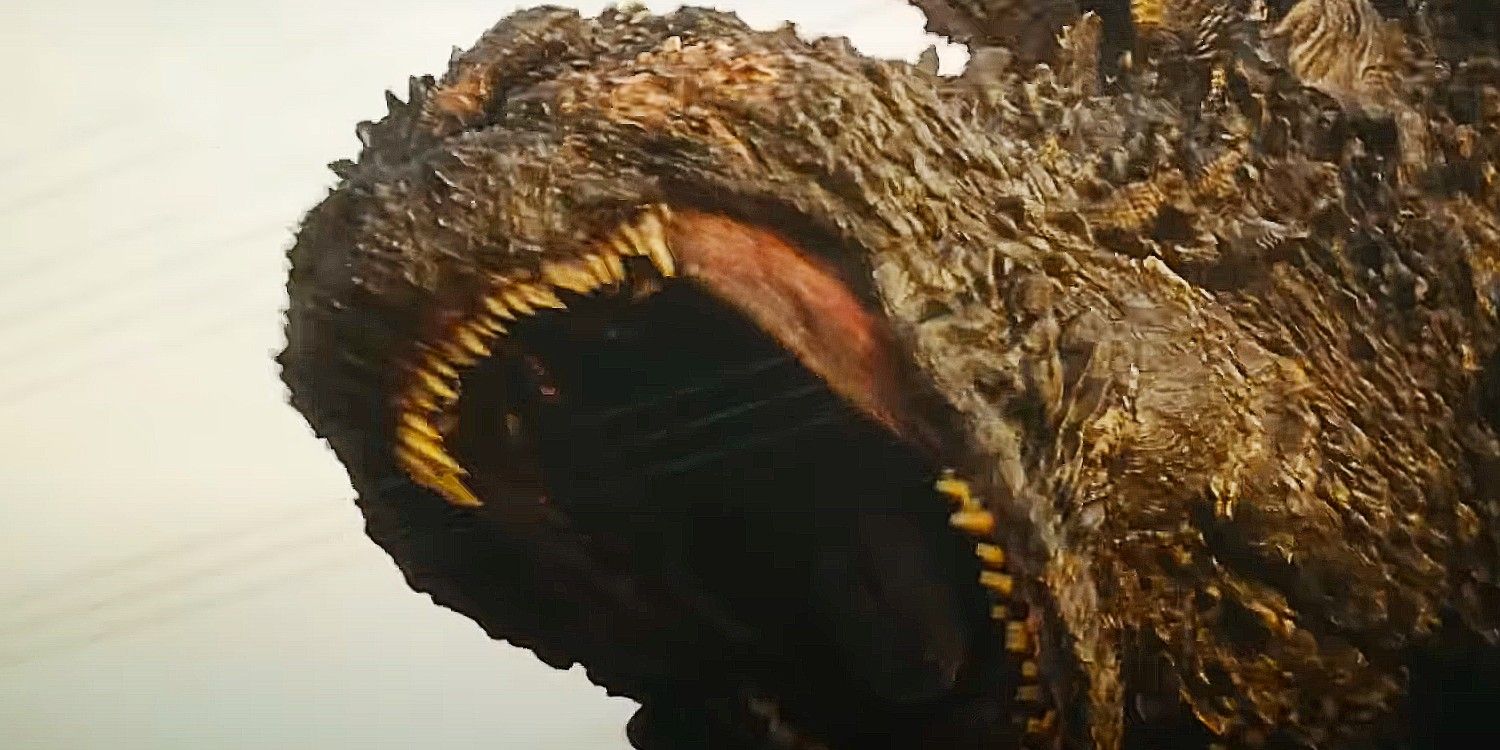
Godzilla's Cinematic History
As a monster boasting over 60 years of cinematic history, Godzilla has a complex history, complete with multiple interpretations of his true origin and nature. Having gone from a staple of Japanese cinema to a beloved hero with a worldwide fanbase, Godzilla is easily one of the most famous monsters in pop culture. It's for this reason that his story has been told and retold so many times on the big screen since his debut in 1954.
Godzilla 1954
Decades of Godzilla movies have yielded 12 different live-action versions of the King of the Monsters, the newest incarnation appearing in Godzilla Minus One. The Godzilla brand now encompasses more than 30 movies, the bulk of which coming from his parent studio, Toho. The vast number of films in the franchise, as well as the differing cultural takes on the monster from Hollywood, have resulted in some inconsistencies, even when it comes to the question of what Godzilla actually is. However, there are certain elements of his character that nearly every movie gets right.
Godzilla's Cinematic History
The Origins of Godzilla
In most continuities, it's understood that Godzilla's original form is that of a prehistoric species of reptile. This idea dates all the way back to the 1954 Godzilla, where it was mentioned by the scientists trying to get a grasp on the situation. Presumably, Godzilla was a creature capable of living both in the water and on land, not unlike sea turtles and certain species of snakes. Perhaps because he lived so deep in the ocean, his species never went completely extinct. Due to nuclear testing in the 1950s, Godzilla was bombarded with gamma radiation, which caused him to undergo a massive physical transformation.
Godzilla shooting his atomic breath straight up-1
The threat of Godzilla being created by the H-bomb is also present in Toho's other Godzilla timelines, including the ones seen in the Heisei series (1984-1994), the Millennium series (1999-2004), Shin Godzilla, and Godzilla Minus One. In these stories, it can also be assumed that like the original Godzilla, he started out as a prehistoric reptile. However, there are exceptions to that. The first is 2001's Godzilla, Mothra, and King Ghidorah: Giant Monsters All-Out Attack, where Godzilla is a supernatural force fueled by the ghosts of Japanese soldiers killed in World War II. The other is Shin Godzilla, which reintroduces Godzilla as an unknown underwater creature irradiated by nuclear waste.
The Origins of Godzilla
The 1998 American Godzilla movie took a long list of liberties with the Godzilla character, but one part it did keep was the reptilian aspect of his origin. The rest, though, was significantly altered. This movie settled on a specific reptile - the iguana - and told a story that involved the creature getting irradiated during a nuclear test in France. This was the first - and will perhaps be the last - Godzilla to be transformed from an iguana.
Godzilla coming out of the water in the 2014 movie
Godzilla's Powers and Symbolism
One of the constants of the Godzilla franchise pertains to his unique abilities. The 1998 American Godzilla possessed no powers of any kind, but all other versions are able to fire powerful bursts of atomic energy through their mouths. Sometimes mistaken as fire because of how his ability resembles a dragon's fiery breath, this power is known as Godzilla's atomic breath. It, and the glow that emanates from his dorsal fins, is a direct product of the radiation that flows through his body. These abilities come with the increase in size and other physical changes made by his transformation.
Being powered by radiation shapes Godzilla's everyday life. In fact, traditional versions of Godzilla hunger for more of it. His ability to sense it, and his subsequent pursuit of radiation, was what caused a lot of the conflicts that he had with the military in Toho's Godzilla movies. Not interested in meat or any other form of organic matter, Godzilla survives only on radiation and can gain both strength and sustenance from consuming it.
When considering what Godzilla's existence is meant to convey, it's important to keep in mind the timing of his debut and the circumstances. Godzilla released in 1954, nine years after H-bombs were dropped. Having been in development at a time when the nation was still recovering, Godzilla was a response to this destruction; the titular monster acted as a metaphor of sorts for nuclear weapons and the harm they caused Japan in World War II.
Although Legendary's Monsterverse is widely considered to be much more faithful to the source material than the 1998 reboot, it's worth noting that in spite of that, it still veered in a very different direction from Toho's approach with its takes on Godzilla's origin. What sets the Monsterverse's Godzilla apart from every other version of the monster is that he wasn't an animal mutated by radiation in the aftermath of humanity's development of nuclear weapons. Rather, he is regarded as a force of nature much older than nuclear technology. He was only 'awakened' by a nuclear submarine in 1954.
